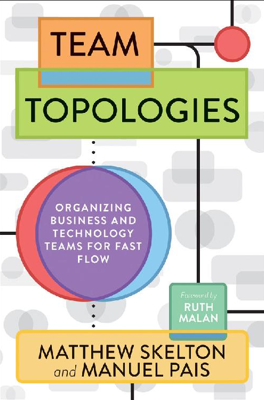The Problem With Org Charts
The Flaw in Traditional Org Charts
Traditional organizational charts (org charts) are inadequate for modern technology-driven environments due to their static nature, which cannot effectively represent the dynamic interactions and communication flows required in software development. These charts usually depict hierarchical structures that supposedly guide communication, but real interactions often span across different lines, avoiding these set confines.
The Need for Decoupled Teams
For effective software development and operations, organizations should rely on decoupled, long-lived teams rather than the rigid structures shown in org charts. This approach facilitates speed and safety by enabling teams to respond flexibly and quickly to changes and demands without being hindered by bureaucratic barriers.
Communication Structures and Realities
The real communication structure in most organizations diverges significantly from what is depicted in the org chart. The formal structure shown on org charts is primarily useful for compliance with regulations but fails to capture the actual interactions that occur during software development, which are crucial for creating effective technology solutions.
Beyond the Org Chart: Three Organizational Structures
According to Niels Pflaeging in "Organize for Complexity," every organization embodies three distinct structures:
- Formal Structure: The official org chart that facilitates compliance but does not reflect real operations.
- Informal Structure: The network of informal interactions and influence among individuals.
- Value Creation Structure: How work actually gets done, which relies on interpersonal and inter-team relationships and reputation.
Team Topologies as a Solution
The concept of Team Topologies introduces an adaptive model for organizing technology teams that emphasizes the smooth flow of software delivery and adaptability to changing technologies and market conditions. It proposes:
- Four Fundamental Team Types: Stream-aligned, platform, enabling, and complicated-subsystem teams.
- Three Core Interaction Modes: Collaboration, X-as-a-Service, and facilitating.
These elements help organizations leverage Conway's Law, which posits that software design mimics the communication structures of the company. Understanding and applying this principle allows for more effective software architecture that is closely aligned with the team's structure and communication methods.
Addressing Cognitive Load and Bottlenecks
Team cognitive load is an essential consideration that is often overlooked. Organizations need to ensure that the workload and responsibilities assigned to a team are manageable within their cognitive capacity to prevent overload, which can lead to decreased efficiency and motivation. Properly managing cognitive load involves designing team roles and interactions that prioritize efficient workflow and avoid bottlenecks.
Leveraging Dynamic and Adaptive Structures
The dynamic and adaptive structures endorsed by Team Topologies enable continuous alignment of team configurations with evolving business objectives and technological landscapes. This approach fosters a responsive and agile organizational culture that can effectively harness the collective capabilities of its technology teams to meet contemporary challenges and opportunities.
In essence, by moving beyond outdated org charts and embracing more fluid and realistic models of team interaction and organization, businesses can achieve superior outcomes in the fast-paced world of software development and technology innovation.
